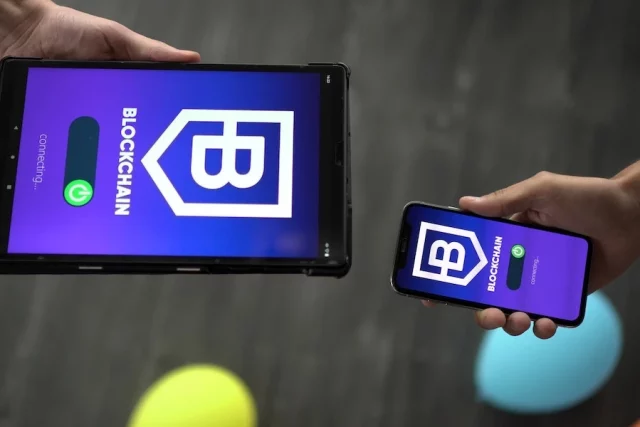A crypto wallet is a software application that allows users to securely store, manage, and send cryptocurrencies like Bitcoin, Ethereum, and others. It functions like a digital bank account for cryptocurrency, allowing users to receive, store, and send cryptocurrency to others. Here you’ll find out why crypto became one of the hottest topics of the financial market and how to make a crypto wallet.
The Rise Of Crypto And Further Perspectives
Cryptocurrency became popular due to a combination of factors. Bitcoin, the first and most well-known cryptocurrency, was created in 2009 and gained widespread attention for its decentralized and secure nature. This helped to spark interest in other cryptocurrencies.
Later on, many individuals looked for alternative investment opportunities, and cryptocurrency has become an attractive option for some as crypto has low-interest rates and volatile traditional financial markets. The popularity of DeFi has also helped to drive interest in cryptocurrency. With the development of more user-friendly wallet and exchange applications, it has become much easier for individuals to buy, sell, and use cryptocurrency, further fueling its popularity.
It is difficult to predict the exact future of cryptocurrencies, but there are several factors that could impact their growth and adoption in 2023:
Regulation: Governments and regulatory bodies are increasingly taking notice of cryptocurrencies, and it is possible that new regulations could emerge that could impact their use and growth.
Mainstream adoption: If cryptocurrencies continue to gain mainstream acceptance, it could lead to increased use and investment.
Technological advancements: The crypto industry is constantly evolving and new developments, such as improvements to scalability and security, could further boost the growth of cryptocurrencies.
Institutional involvement: Institutional investment in cryptocurrencies has been on the rise, and if this trend continues, it could lead to further growth and stability in the crypto market.
Competition from other financial technologies: The growth of cryptocurrencies will likely be impacted by competition from other financial technologies, such as stablecoins, digital assets, and decentralized finance (DeFi) platforms.
Overall, the future of cryptocurrencies is uncertain and could be influenced by a variety of factors. However, it is possible that we will see continued growth and adoption of cryptocurrencies in 2023 and beyond, according to the statistics.
What Makes A Crypto Wallet App A Great Start-Up Idea?
A crypto wallet app can be a viable startup idea, given the growing popularity of cryptocurrencies and the increasing demand for secure and user-friendly ways to manage and store them.
Consider these factors before starting:
Conducting market research: Conduct thorough market research to understand the current market landscape and identify areas where your product can differentiate itself and offer unique value to users.
Building a strong team: As with any startup, having a strong and experienced team is critical to success. Consider bringing on individuals with expertise in blockchain technology, cryptography, and app development.
Securing funding: Developing a crypto wallet app requires significant technical expertise and resources, so securing funding from investors or through other means may be necessary.
Ensuring security and regulatory compliance: Security and regulatory compliance are crucial considerations in the crypto space, so it’s important to ensure that your wallet app adheres to the necessary security protocols and regulations.
Focusing on user experience: A crypto wallet app’s success will depend on its user adoption, so it’s important to prioritize a user-friendly interface and overall positive user experience.
Overall, starting a crypto wallet app as a startup can be a challenging but potentially rewarding venture, given the growth potential in the cryptocurrency market. However, it’s important to carefully evaluate the risks and opportunities and to have a well-thought-out plan for how to approach the market and build a successful product.
How To Make A Crypto Wallet?
To develop a crypto wallet app, you’ll need to have an understanding of blockchain technology, as well as experience with programming languages such as JavaScript, Python, or Go. The following are the general steps involved in developing a crypto wallet:
- Choose a blockchain platform: The first step in creating a crypto wallet is to choose a blockchain platform that you want to build your wallet on. Popular options include Ethereum, Bitcoin, and Binance Smart Chain.
- Determine your wallet’s features: Decide on the features you want your wallet to have, such as the ability to send and receive transactions, view transaction history, and store multiple cryptocurrencies. Remember, that a user-friendly interface makes it easy for users to manage their cryptocurrency holdings and transactions.
- Select a development method: There are several options for developing a crypto wallet, including building from scratch, using an open-source wallet platform, or using a software development kit (SDK).
- Implement security measures: Implement robust security measures to ensure that your wallet is secure, such as encrypting private keys, using multi-sig technology, and regularly updating security protocols. Nowadays, two-factor authentication (2FA) is a must for financial apps. 2FA helps to prevent unauthorized access to users’ accounts, even if an attacker has obtained their password, as they would also need to have access to the user’s phone or authentication device. This makes it much more difficult for attackers to gain access to users’ funds, as they would need to obtain both the password and the authentication device.
- Test and launch: Before launching the wallet to the public, it’s recommended to conduct a closed beta test with a small group of trusted users. This can help to identify any remaining issues and get feedback on the user experience.
- Continuously monitor and improve: Even after launch, it’s important to continue supporting and developing the wallet, fixing bugs, adding new features, and improving the overall user experience.
Bottom Line
In conclusion, developing a cryptocurrency wallet requires a comprehensive understanding of the technology, as well as a focus on security and user experience. A successful crypto wallet must provide users with secure storage for their private keys, an intuitive interface for managing their funds, and a commitment to regularly updating the security protocols and adding new features.
Whether you are a start-up or an established company, developing a crypto wallet requires careful planning and execution, from the design and development stage to the testing, beta testing, and launch.
However, with the growing popularity of cryptocurrencies and the increasing demand for secure and user-friendly wallets, the rewards for creating a successful crypto wallet can be substantial. By focusing on security, usability, and innovation, you can create a crypto wallet that stands out in a crowded market and provides value to its users.














